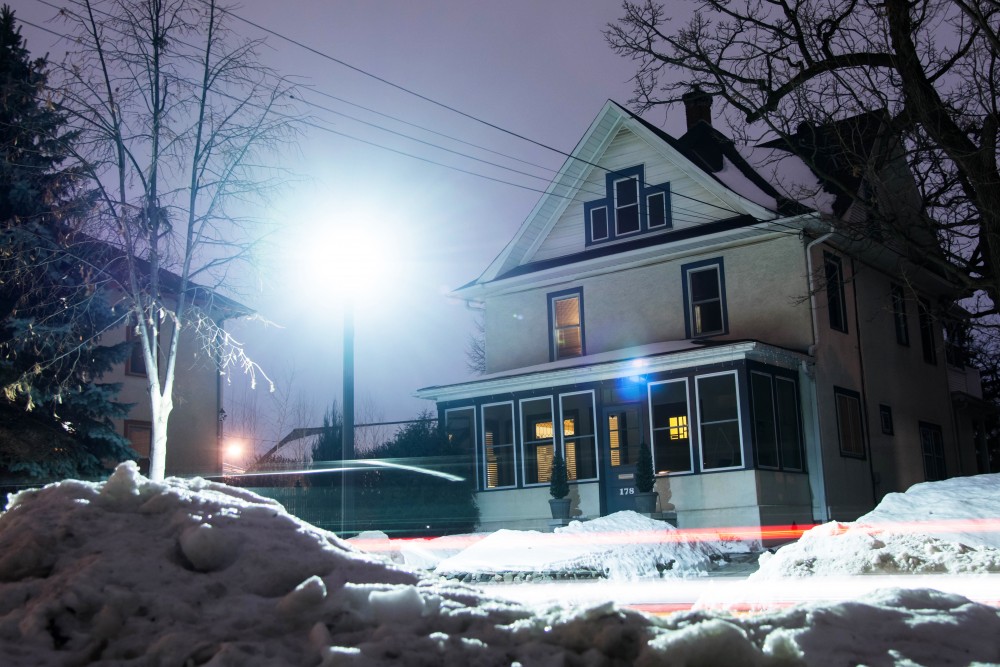Prospect Park residents are seeking to dim the brightness of LED street lights shining directly into neighborhood homes.
The Prospect Park Association sent a letter to the University of Minnesota and City of Minneapolis on Jan. 25 requesting them to dim LED street lights they own in the neighborhood. Residents also made design suggestions for future light installations in the neighborhood.
“LED lights are an incredibly cheap, efficient and bright way to do lighting,” said Evan Roberts, PPA Chair of Transportation & Safety. “One of the difficulties is that the light they put out can be too bright.”

PPA contacted the University because of the LED lights it owns along the campus Transitway. They contacted the City of Minneapolis because of the lights it owns throughout the neighborhood.
LED lights became more prevalent in Minneapolis after a 2015 street lighting plan and subsequent push by Xcel Energy to replace aging street lights in various parts of the city.
LED lights typically cost more than a traditional street light, but last three to four times longer and can cut annual electricity usage by up to 70 percent, said Diana McKeown, Metro Clean Energy Resource Team (CERT) Director at the Great Plains Institute.
“The consequences of those being too bright, is that they cause a lot of light pollution,” Roberts said. “It gets into peoples’ homes.”
Ward 2 Minneapolis City Council Member Cam Gordon, who received PPA’s letter, said he believes the association’s concerns are fair, despite his own preference for the energy-efficient lights.
“I have no reason to object to warmer or dimmer lights,” Gordon said. “Maybe the University can even take some leadership and come up with some pilot ideas.”
To deal with the intensity of the streetlights, PPA’s letter suggests dialing down the “temperature” of the lights from a “cool” 4000 kelvins, to a “warmer” 2700 kelvins. This would “minimize blue haze,” which can be visually impairing.
“As [the City] goes forward, [we want them] to consider reducing the color temperature, particularly near residences where people are exposed to them for a while,” Roberts said.
In addition to the temperature adjustment, Roberts hopes for better casing for the LED lights.
“[Currently, the lights] are installed in old lamp shades, [which] spreads the light out like a lighthouse,” Roberts said. “When you’re in a car, it’s easy to not notice it. But as a pedestrian, you can see it.”
McKeown said street lights at 3000 kelvins and lower are slightly less energy-efficient than the more standard 4000 kelvins, and not as bright.
“I think there is a way to work with this [issue], and make sure that it’s working for everyone,” McKeown said.








